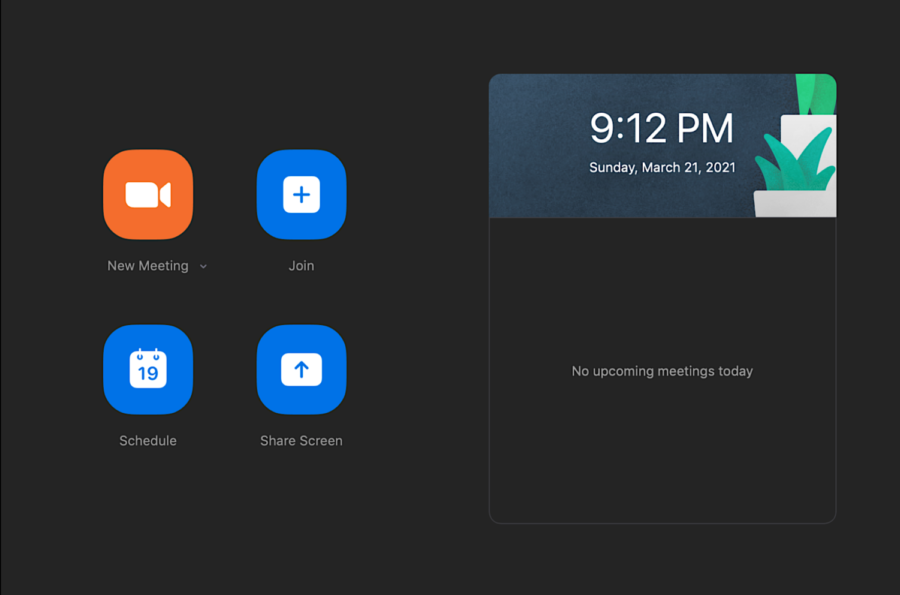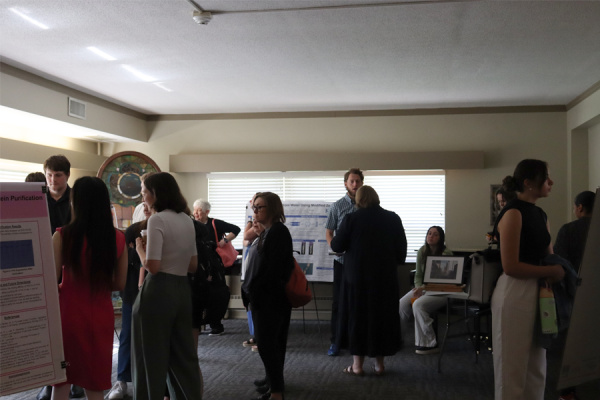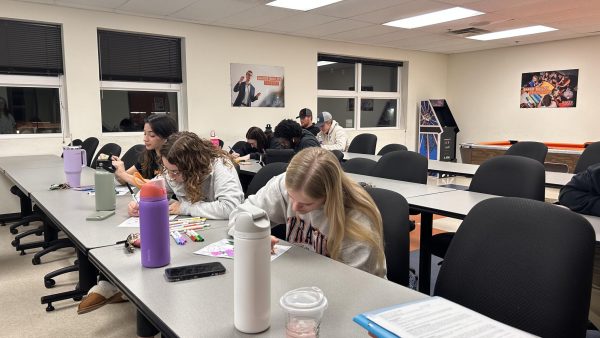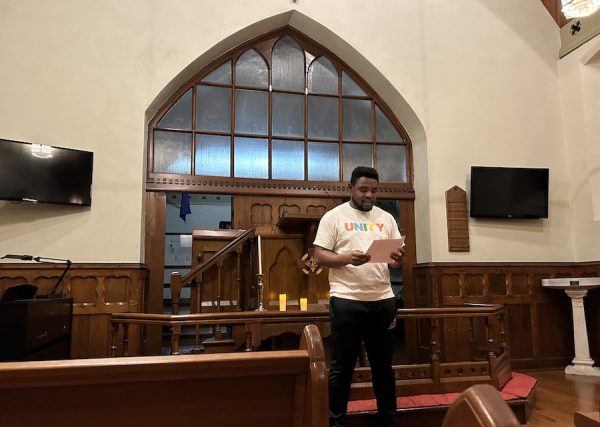Hybrid classes impact in-person attendance
The home screen for Zoom includes the date, time and place to join meetings through a specific password. Students have varied opinions on the setup of Zoom.
March 24, 2021
As in-person classes resume, several professors continue to provide the option for students to attend class via Zoom even when they are scheduled to meet in-person.
The use of Zoom allows students in quarantine and isolation to keep up to date with their classes and follow the school policy that mandates all COVID-19 exposures result in online learning.
However, a recent trend emerged where students who are not quarantined choose to attend class via Zoom when the rest of the class meets in-person. Due to this split environment and the distractions it can cause, concerns have emerged regarding the quality of learning.
“The hardest part [of split learning] is when a class is partly online and partly in-person, because the teacher has to juggle the different formats while trying to engage everyone equally,” Freshman Jack Merchant said. “Inevitably, those on Zoom will be less engaged and experience connection interruptions or technology issues that inhibit the live process of learning.”
Convenience is a popular reason that students choose to Zoom into classes rather than join in-person.
“I think that, on occasion, I prefer Zoom if I’m feeling exhausted or lazy,” Merchant said. “Admittedly, being able to multitask while on Zoom is really nice, and the flexibility of learning without being in the classroom is a huge benefit.”
Faculty members notice similar issues with students utilizing Zoom links for reasons other than quarantine.
Professor of Business and Economics Kevin McCarthy explained that many students who choose to Zoom into his classes often do so to keep up with other responsibilities and financial obligations.
“I do have some students who are juggling other things, maybe sports, maybe jobs, where Zoom is something of a convenience, but that’s really not our intention,” McCarthy explained.
Hybrid learning and the use of Zoom was designed to be used out of necessity. However some student situations do not allow them to safely attend class in-person. Students with such concerns are required to speak with ADA Compliance Officer Kathy Wilson to get approved accommodations.
For Sophomore Sabrena Hayles, the necessity of Zoom was due to health concerns.
Hayles became sick over winter break and was hospitalized. Both her own concerns and those of her parents led her to choose Zoom classes until she returns to full health.
Hayles’ unique situation prompted varied responses from her professors.
“One of my professors was more adamant about being in-person. My other professors are much more lenient and understand my situation,” Hayles said.
It can be difficult to discern when an excuse is and is not valid when it comes to virtual learning. McCarthy believes that, though he prefers everybody to be in-person, students should be able to make decisions for themselves.
“Students can make their own choices in terms of ‘I’m not going to class today,’ and maybe that has nothing to do with Zoom,” McCarthy said. “I think students experience greater value in-person, so they’re naturally migrating to that. I encourage students to make their own decisions, and I think they largely do.”
For the foreseeable future, students will continue to adapt to hybrid classes and unconventional learning environments. Though the transition back to a traditional classroom setting has been slow, both professors and students continue to adjust as needed.
“If we’re all on Zoom, I can deal with that pretty well. If we were all in-person, it would be business as usual. But with hybrid courses, it’s neither efficient nor fun,” McCarthy stated.
As repercussions of COVID-19 develop, the impact of distance learning in higher education continues to take a mental toll. The Student Counseling Center, located at 519 Grove St., is available for students in need of assistance. Contact Sherri Pahcoddy at [email protected] or 785-594-8409 for more information.














